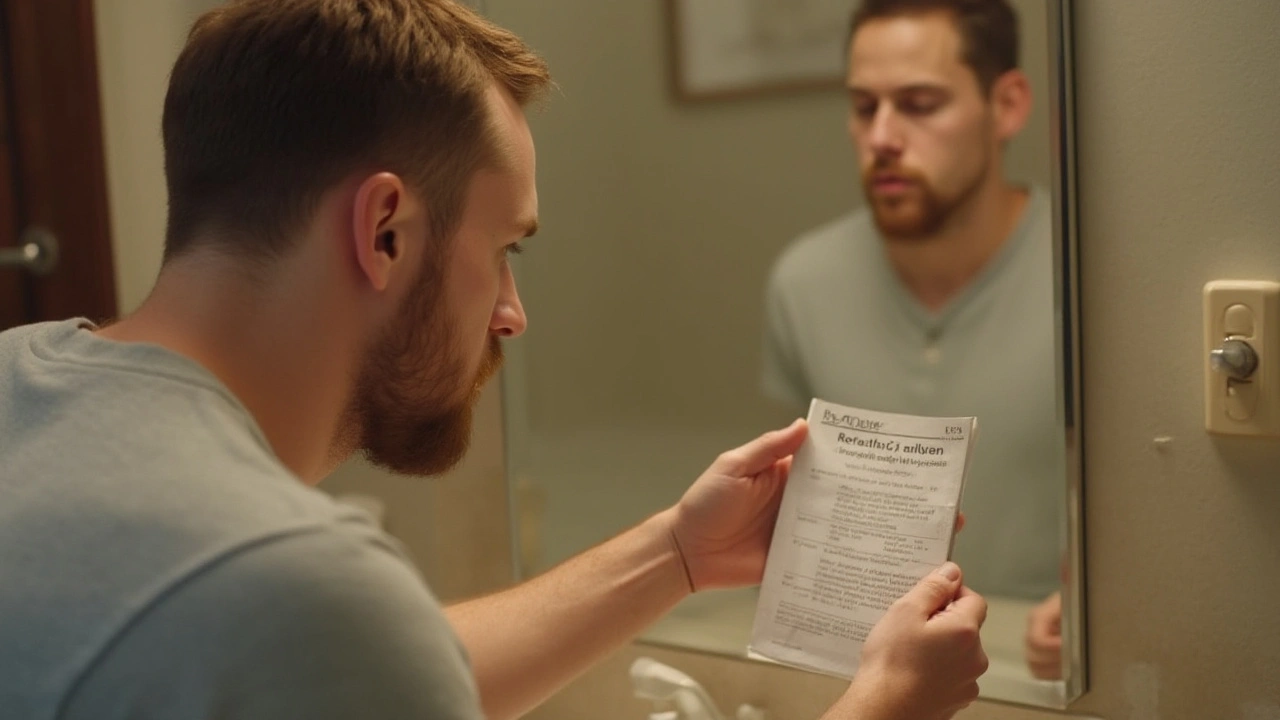
Rogaine 2: Real Results, Facts & User Tips for Hair Regrowth
Everything you need to know about Rogaine 2. Find the facts, honest tips, side effects, and real-life data on this minoxidil solution for fighting hair thinning.
View moreIf you’ve noticed more scalp than usual when you brush or in the shower, you’re not alone. Hair thinning affects millions of women and can be frustrating, but the good news is there are clear reasons behind it and real ways to turn things around.
The first thing to understand is that hair loss in women isn’t usually the dramatic bald spots you see on men. It’s often a gradual thinning across the crown or a widening part line. This pattern tells you the problem is usually hormonal, nutritional, or stress‑related rather than genetic baldness.
Hormones. Changes in estrogen and progesterone during pregnancy, birth control use, or menopause can push more hairs into the resting phase. When they finally fall out, the scalp looks thinner.
Iron and Vitamin Deficiencies. Low iron, vitamin D, or B‑vitamins are a common hidden cause. Your body steals nutrients from hair follicles to keep vital organs working.
Stress. High cortisol levels from chronic stress signal the body to conserve energy, and hair growth is one of the first things to get cut back.
Medical conditions. Thyroid imbalances, polycystic ovary syndrome (PCOS), and certain autoimmune diseases can all trigger thinning.
1. Check your diet. Aim for iron‑rich foods like spinach, lentils, and lean meat. Add vitamin‑C rich fruits to help your body absorb iron better.
2. Take a multivitamin. Look for a formula that includes biotin, zinc, and vitamin D. These nutrients support the growth cycle.
3. Manage stress. Try short daily walks, breathing exercises, or a hobby you enjoy. Even five minutes of mindfulness can lower cortisol.
4. Be gentle with your hair. Avoid tight ponytails, harsh brushes, and heat styling every day. Let your hair air‑dry when possible.5. Use a scalp‑friendly shampoo. Look for products with caffeine, ketoconazole, or saw palmetto. They can help keep follicles healthy.
If you’ve tried these basics and still see thinning, a doctor‑ordered blood test can pinpoint deficiencies or thyroid issues. In some cases, a dermatologist may suggest minoxidil or low‑level laser therapy, both of which have solid evidence for helping women regrow hair.
Finally, remember that hair growth is a slow process. You might not see big changes in a few weeks, but consistent care usually shows results in three to six months. Keep tracking your progress with photos, and celebrate small improvements.
Hair thinning can feel personal, but it’s often just a sign your body needs a tweak. By focusing on nutrition, stress management, and gentle hair care, you give your follicles the best chance to bounce back. So next time you brush, enjoy the feeling of healthier strands rather than worrying about the ones that fell out.

Everything you need to know about Rogaine 2. Find the facts, honest tips, side effects, and real-life data on this minoxidil solution for fighting hair thinning.
View more